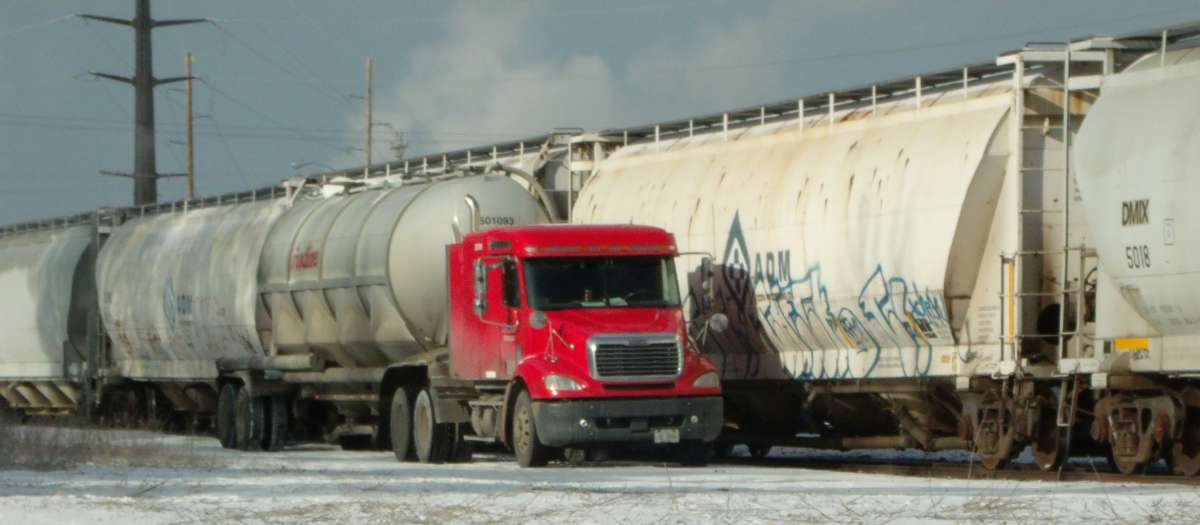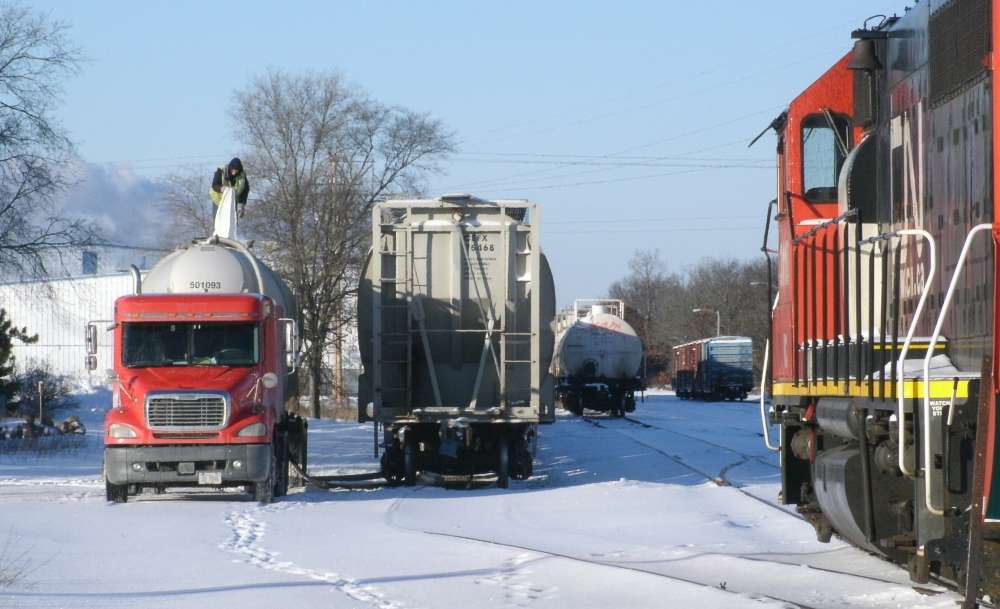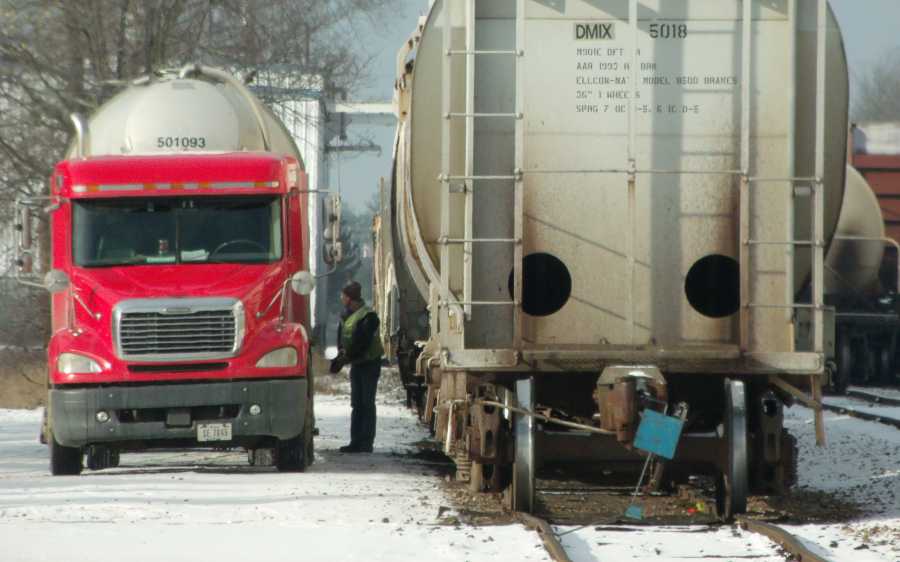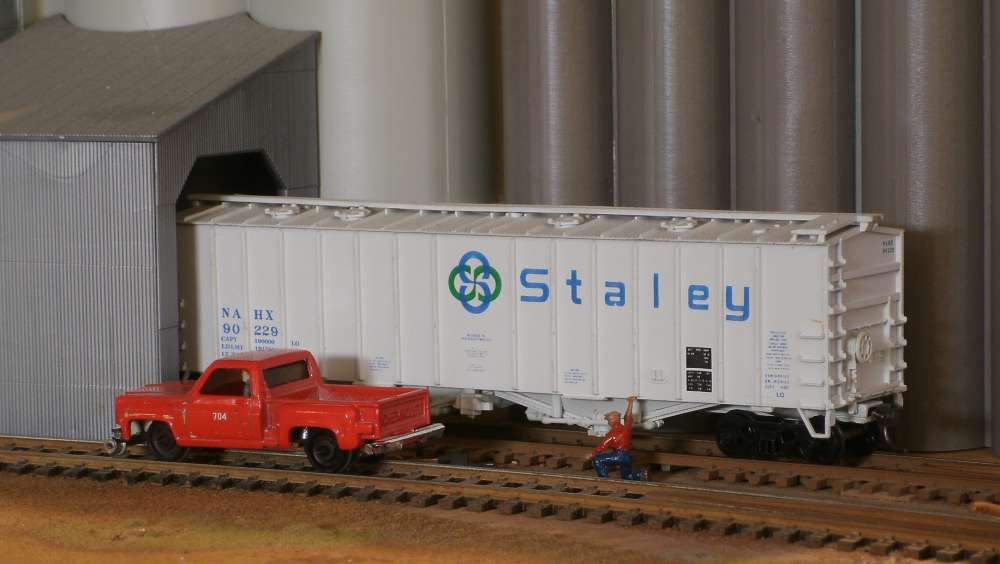|
For over a year, there has been a transload between hoppers and Foodliner trucks on the east side of Plover, behind the old bakery. The bakery used to get pneumatic unloading hoppers, and their equipment was stationary and indoors. But this transload is all outdoors. 
Now there's another transload, a mile away at the Plover yard.
I didn't search who is getting the product or what is in the hopper.
A 100-ton pneumatic unloading hopper can fill a few trucks. The tractor supplies air to pressurize the hopper, about 12 psi. |

|
These are pneumatic tube unloading hoppers, there's a pipe and valves on the bottom. The product stays clean and dry inside a pipe or flexible hose at all times during the transfer. |

.
|
There is a Y-shape outlet pipe that is stored upwards in the shipping position. On a plastic model, you should glue it there. It is chained up to be sure it stays in a safe place during transit. Otherwise it could stick beyond the car side or drag on the ties. During unloading, It is rotated down near to the ground during so the flexible hose to the truck can lay straight and not kinked.
If the outlet isn't on the best side for unloading, the driver can loosen the clamps and roll it to the other side.
If I had my choice, I would prefer the car turned so the piping is always on the best unloading side. On a model railroad, you could have 'customer service' check if your car is staged in the train ready to set out for easy unloading. See the hoses crossing between the truck and rail car. |

| A different day, another load. . . . . . . |

| Here's a good modeling detail, the BLUE FLAG between the rails, warning that men are working on cars, don't move them. |
| There's also paper mill traffic in Plover, I don't know if food or something else is in this pretty hopper. |

You can look at the Foodliner official web site.
Here is an advertising pdf of American Rail Car pneumatic tube unloaders.
And hoses and equipment are at DAIS Global
American Railcar Pressureaid and see their good pdf data sheet with dimensions.
Here's a picture of a model of a HO Walthers 60-foot Trinity Power Flow TILX 5-Bay Covered Hopper.
TILX 5000 Demonstrator big orange hopper, by Walthers, #932-5807, 1994
Also see ACFX 51011 Demonstrator Atlas 2000 stock-model white ACFX Center Flow PressureAid 15 psi hopper
.
From a web search, I suspect it's a lot easier to get Atlas models. See Atlas HO Pressureaide
|
The cars shown above are pneumatic tube unloaded. They are for free-flowing material, such as sugar. The hopper bays have about 45-degree angles. The driver uses a rubber mallet to bang the hoppers to hear if a compartment is empty. The material is not expected to stop flowing. . I don't have a model of a pneumatic tube unloading hopper, but I do have airslide hoppers. |

|
They have the long low-angle sloped floor with the plastic screen plate inside, where air is distributed and can break up bridged material. They would typically be used for flour or starch, products that can pack down or bridge over the outlet. |
To my index page, Bruce's RailRoad Pictures
This page was wrote in December, 2013.